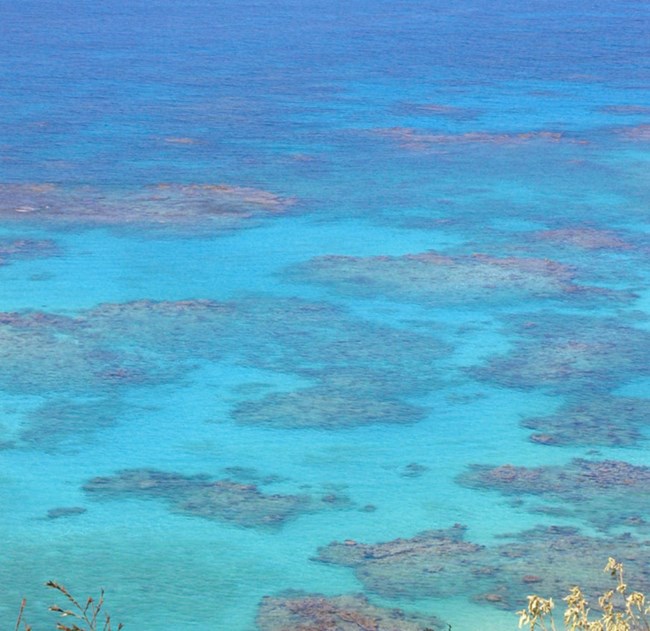Part of a series of articles titled Beach and Coastal Landforms.
Previous: Delta Landforms
Next: Lakeshore Landforms
Article

The same physical processes act on tropical coastlines—to produce either rocky headlands or long, flat sandy shorelines—as in other latitudes. However, in warm tropical waters, colonies of corals form, mostly between 30° north and 30° south latitude. Corals are animals, but they are stationary; their food source is washed to them through continuous water motions. Corals have an associated diverse array of reef fish, which attract snorkelers and scuba divers. As live corals grow atop the skeletons of dead corals, a coral reef is formed.
Because living corals require a minimum sea temperature for growth, they are concentrated in the tropics, as are various calcareous algae that form carbonate encrustations along many tropical shores. They also favor clear waters (they cannot live in deltas or muddy environments) and, in general, depths shallower than 75 feet (23 m), although some species tolerate depths of up to 500 feet (152 m) (Wyckoff 1999).
The most well-known type of reef is a barrier reef, which is built in shallow waters that may deepen through time. These reefs may reach enormous proportions. The Pacific island, Tahiti, is encircled by a barrier reef. The Great Barrier Reef of Australia (actually a composite of some 2,500 small reefs) is about 1,200 miles (1,931 km) long, with a lagoon tens of miles (kilometers) wide.
Reefs that are exposed above sea level are among the most massive and impressive landforms. Today, such reefs exist as huge, colonies; they also exist as “fossil” relics making up much of the world’s limestone. Among reef formations in the United States is the one that makes up Guadalupe Mountains and Carlsbad Caverns National Parks in Texas and New Mexico, respectively.
Erosion of coastal landforms, especially cliffs, is not generally a significant source of sediment in the tropics where environments with low wave energies are common. This observation is supported by the relative lack of coasts formed of bedrock in the tropics. Even where present, cliffs formed of well-consolidated strata recede slowly and supply little sediment.
Part of a series of articles titled Beach and Coastal Landforms.
Previous: Delta Landforms
Next: Lakeshore Landforms
Last updated: December 12, 2018